Keeping your wardrobe organized not only saves time but also ensures that your clothes and accessories are well-maintained. Whether you have a compact closet or a luxurious walk-in wardrobe, mastering the art of organizing your wardrobe can transform your daily routine. Here’s a step-by-step guide to get started.
Table of Contents
Toggle1. Declutter Your Wardrobe organizing your wardrobe
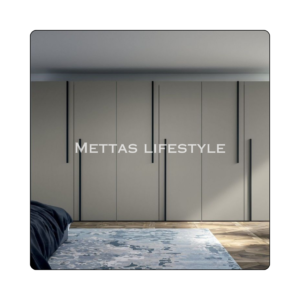
The first step in organizing your wardrobe is getting rid of items you no longer need.
- Separate clothes into “keep,” “donate,” and “discard” piles.
- Identify items you haven’t worn in the past year.
- Let go of damaged or worn-out clothing.
- Donate items that are in good condition but don’t fit.
- Recycle or repurpose old fabric.
- Be honest about sentimental pieces and their practicality.
- Minimize duplicates (e.g., too many black T-shirts).
- Avoid hoarding seasonal clothing unnecessarily.
- Declutter shoes, bags, and accessories as well.
- Repeat this process every 6-12 months.
2. Categorize Your Wardrobe Items
Grouping similar items together makes it easier to locate what you need.
- Separate clothing by type (shirts, pants, dresses, etc.).
- Divide items by season (summer, winter, etc.).
- Create categories for casual, formal, and workout clothes.
- Use boxes or bins for smaller items like scarves or socks.
- Organize accessories like belts and jewelry in dedicated sections.
- Arrange shoes by type (formal, casual, sports).
- Keep seasonal outerwear in a separate space.
- Include a separate section for special occasion wear.
- Allocate specific shelves for frequently used items.
- Label storage boxes for easy identification.
3. Maximize Hanging Space
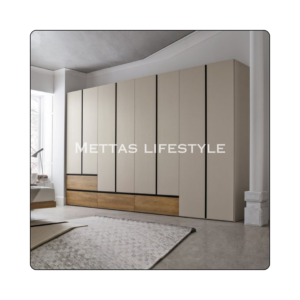
Hanging clothes properly keeps them wrinkle-free and easy to access.
- Use velvet or non-slip hangers for delicate fabrics.
- Hang dresses, shirts, and coats to prevent creasing.
- Use tiered hangers for pants and skirts.
- Group similar items on hangers (e.g., all jackets together).
- Avoid overcrowding the hanging space.
- Use a double-rod system to create additional hanging layers.
- Install hooks for belts, ties, and scarves.
- Invest in adjustable rods for flexibility.
- Hang longer items separately to prevent touching the floor.
- Rotate hanging clothes seasonally.
4. Fold and Stack Efficiently
Proper folding techniques can save space and keep your wardrobe tidy.
- Fold T-shirts using the Marie Kondo method.
- Stack jeans and trousers vertically.
- Use dividers for neatly folded piles.
- Keep heavy fabrics at the bottom and lighter ones on top.
- Roll small items like socks or tank tops to save space.
- Avoid over-stacking to prevent toppling.
- Allocate drawers for folded clothing.
- Separate gym clothes and loungewear in individual sections.
- Use storage boxes for rarely used items.
- Ensure each item is visible to avoid rummaging.
5. Organize Accessories
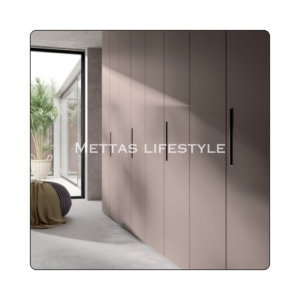
Accessories need dedicated storage to avoid tangling or misplacement.
- Use hooks or racks for necklaces and bracelets.
- Store rings and earrings in small jewelry boxes.
- Use drawer organizers for ties and belts.
- Hang scarves on specialized hangers or hooks.
- Keep bags upright using shelf dividers.
- Use a shoe rack or cubbies for footwear.
- Store sunglasses in a protective case.
- Separate daily-use accessories from occasional ones.
- Organize hats and gloves in labeled bins.
- Regularly check and declutter accessories.
6. Utilize Vertical Space
Maximizing vertical storage ensures no space goes to waste.
- Install additional shelves above existing ones.
- Use hanging organizers for shoes or small items.
- Store less-used items in upper compartments.
- Add stackable boxes for extra layers of storage.
- Hang long dresses or coats in tall sections.
- Use over-the-door hooks for bags or scarves.
- Install pegboards for organizing jewelry or belts.
- Consider pull-out shelves for better access.
- Keep everyday essentials at eye level.
- Use step stools for easy access to high shelves.
7. Incorporate Storage Solutions
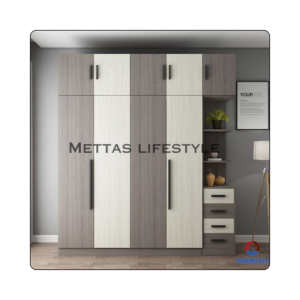
Smart storage solutions can keep your wardrobe neat and functional.
- Use clear bins for easy visibility.
- Install pull-out drawers for folded clothes.
- Invest in adjustable shelving systems.
- Use storage cubes for bulky items like sweaters.
- Choose stackable shoe boxes for footwear.
- Add baskets for loose items like towels or blankets.
- Incorporate vacuum-sealed bags for seasonal storage.
- Use under-bed storage for rarely used items.
- Label every bin or basket for quick access.
- Opt for sliding doors to save space.
8. Maintain a Color-Coded System
Organizing by color not only looks visually appealing but also makes dressing easier.
- Arrange clothes in a rainbow spectrum (e.g., red to violet).
- Separate darks, lights, and neutrals.
- Use matching hangers for a cohesive look.
- Color-code folded piles for easy identification.
- Include accessories like scarves or ties in the scheme.
- Keep shoes arranged by color and style.
- Apply the same system to bags and hats.
- Use fabric bins in colors that match your wardrobe palette.
- Regularly refresh the arrangement during cleaning.
- Incorporate color coding into seasonal rotations.
9. Add Lighting to Your Wardrobe
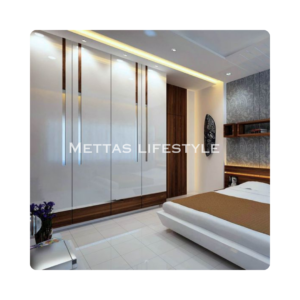
Good lighting improves visibility and adds a touch of luxury.
- Install LED strip lights for a soft glow.
- Use motion-sensor lights for convenience.
- Add spotlights for highlighting sections.
- Include lights in drawers and shelves.
- Opt for warm lighting for a cozy feel.
- Use rechargeable battery-powered lights for easy setup.
- Highlight accessory sections with focused lighting.
- Install mirrors with built-in lights for better dressing.
- Ensure no shadowy corners in the wardrobe.
- Replace bulbs regularly to maintain brightness.
10. Develop a Maintenance Routine
Keeping your wardrobe organized requires regular upkeep.
- Perform a quick tidy-up every week.
- Rotate seasonal clothing biannually.
- Replace damaged hangers or organizers promptly.
- Wash or clean storage bins regularly.
- Reassess and declutter every six months.
- Ensure drawers and doors open smoothly.
- Check for pests like moths and treat if needed.
- Use air fresheners or sachets to keep the wardrobe smelling fresh.
- Teach family members to maintain the system.
- Update the arrangement as your needs evolve.
Conclusion
Organizing your wardrobe like a pro requires thoughtful planning, smart storage solutions, and regular maintenance. By following these tips, you can create a functional, stylish, and stress-free wardrobe that simplifies your daily routine. Start small and make gradual changes to enjoy a perfectly organized wardrobe!
Have questions about your next renovation project? We’ve got answers. Let’s do this together.
Follow House Beautiful on Instagram.
FAQ
Organizing your wardrobe helps save time, maximizes storage space, and keeps your clothes and accessories in good condition.
Use vertical storage, tiered hangers, vacuum-sealed bags, and over-the-door organizers to maximize your wardrobe’s space.
Separate clothes into summer and winter categories. Store off-season items in labeled bins or vacuum-sealed bags.
Use hooks for belts and scarves, separate jewelry in boxes, and store bags upright with dividers.
LED strip lights, motion-sensor lights, and built-in wardrobe lights enhance visibility and add a luxurious feel.

